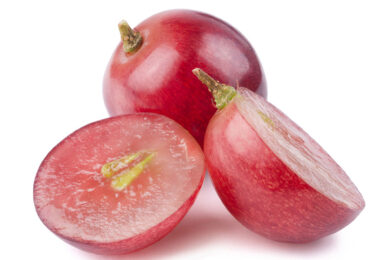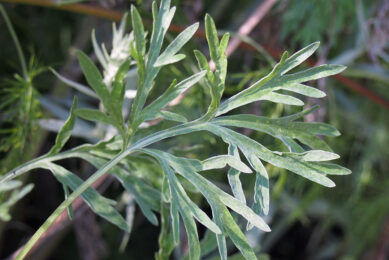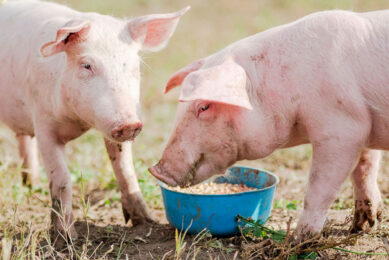Increasing animal resilience with olive bioactives
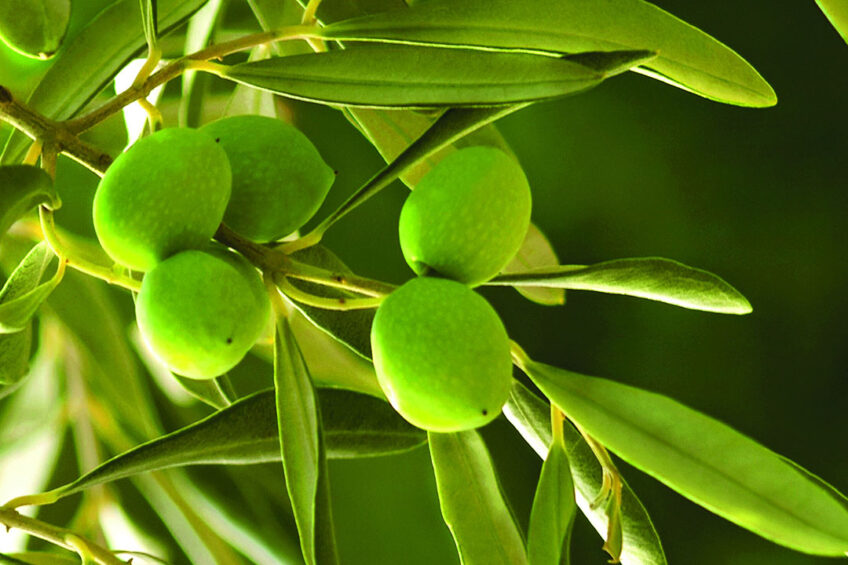
Olives have been recognised as a valuable source of bioactives with well described antioxidant and anti-inflammatory activities. Application of olive bioactives in animal nutrition has proven to sustain animal resilience to stressors becoming a promising strategy to produce more robust animals while up-cycling by-products of the olive industry.
Resilience is defined as the capacity of an animal to be minimally affected by disturbances or to rapidly return to the homeostatic state after being exposed to them. On the other hand, Gut Health is a common term used to describe the proper functionality of the gastrointestinal tract (GIT), considering not only the GIT as a selective barrier, but also as the centre of important digestive and regulatory activities. The role of gut health in the resilience of farm animals is today well recognised, even though not completely understood. However, when animals are exposed to stressors present in our current production systems that can trigger or exacerbate different physiological disorders, the potential negative consequences in the productivity and welfare are clearly dependent on their gut health status.
Olive oil is a key element of the health benefits associated to the Mediterranean diet. Although the benefits were initially attributed to the high amount of monounsaturated fatty acids present, the importance of the minor components on its bioactivity is gaining interest. Main bioactives present in olives (OBs) are phenolic compounds, flavonoids, secoiridoids and triterpenic acids with well described antioxidant, anti-inflammatory and hepatoprotection activities.
Annual worldwide production of olive oil is estimated around 3 million tons per year (EU Commission). Considering that the oil only accounts for about the 20% of the olive weight, there is an unavoidable production of more than 15 million tons of by-products, representing an environmental issue. Nowadays, these by-products are mainly consumed as fertilisers or as feed ingredients. However, due to the large amounts of OBs still present in such residues, the extraction of these molecules for their application to sustain animal resilience to stressors is an innovative and sustainable strategy for their revalorisation.
Oxidative stress and inflammation
Oxidative stress and subclinical chronic inflammation are common side-effects associated to the exposure of animals to stressors, mainly in early stages. Consequently, minimising these side-effects is essential to preserve animals’ welfare and performance. Therefore, the use of products based on plant bioactives directed to improve their natural mechanisms to fight oxidative stress and inflammation are building interest.
After years of investigation, our Innovation team has gained a deep knowledge on OBs identification, characterisation, and their use to efficiently fight oxidative stress and inflammation. In vitro data in the porcine intestinal cell line IPEC-J2 showed how, after challenging a cell monolayer with the oxidative agent TBHP, the cell barrier was compromised losing around 60% of its transepithelial resistance, TEER (Figure 1A). Pre-treatment of the cells with an optimised combination of olive extracts, standardised in polyphenols and triterpenes, was able to reduce barrier damage to a half, demonstrating the antioxidant activity of this proposed mixture. Furthermore, treatment of Raw 264.7 mouse macrophages with LPS induced the overexpression of the pro-inflammatory cytokine IL-1β, which was partially prevented by pre-treatment with the same mixture of OBs, confirming its anti-inflammatory activity (Figure 1B).
Figure 1 – In-vitro results.
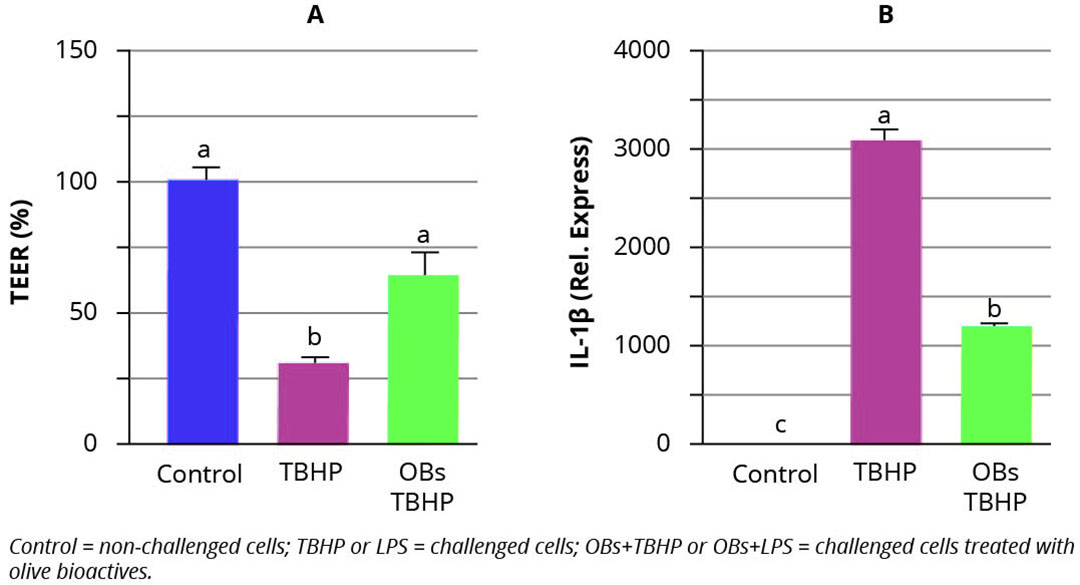
OBs in Poultry
In recent years, Lucta has validated the use of OBs in poultry, mainly focusing on broiler chickens submitted to different types of stressors. Herrero-Encinas et al. submitted broiler chickens to a short-fasting period with or without the supplementation of OBs in diet.The fasting period caused the damage of the intestinal barrier, as evidenced by the increase in the lactulose/mannitol ratio, the reduced ileal villus/crypt ratio and the down-regulation of Claudin-1 gene expression, with an increase of ileal inflammation. Inclusion of OBs in diet was able to mitigate these negative effects. Recently, we evaluated the effect of OBs on growth performance and carcass and meat quality of broiler chickens submitted to various stress factors (heat stress, high human interventions, and less digestible diets). In this study, animals receiving a standardised olive pomace extract showed better growth, healthier fatty acids profile in meat and slower lipid meat oxidation.
OBs in Piglets
Lucta has also validated the use of OBs in swine, principally in early stages (transition period), which were also subjected to different stressors. One study investigated the effects of OBs in the response of intraperitoneally LPS-challenged piglets. Animals with diets supplemented with OBs displayed increased activity levels of antioxidant enzymes in plasma compared with non-supplemented animals. Furthermore, plasma concentration of the anti-inflammatory cytokine IL-10 was also increased while the pro-inflammatory cytokines IL-6 and TNFα were decreased. Finally, an improved intestinal morphology was evidenced by the increased villus/crypt depth ratios in both jejunum and ileum in OBs fed animals. These results confirmed that inclusion of OBs was able to mitigate the negative effects of an acute immunological challenge by reducing oxidative stress and inflammation. Another study evaluated the effect of OBs in social stressed animals. The social stress challenge increased the degranulation of mastocytes compared to non-stressed animals and up-regulated the expression of genes encoding tight junction components Occludin and E-Cadherin, and Catalase in the ileum (Table 1). The use of OBs partially reduced the stress side effects supporting intestinal homeostasis
Conclusions
Displayed results are some examples that demonstrate that OBs contribute to sustain animal resilience in front of challenging conditions contributing to sustain their welfare. Additional research is currently being conducted to extend the use of these bioactives to new poultry and swine stages/challenge periods as well as to understand their mode of action and potential applicability in other species. We believe this is a promising strategy to benefit both environment and animal production using sustainable developments for animal nutrition.
References are available upon request.




